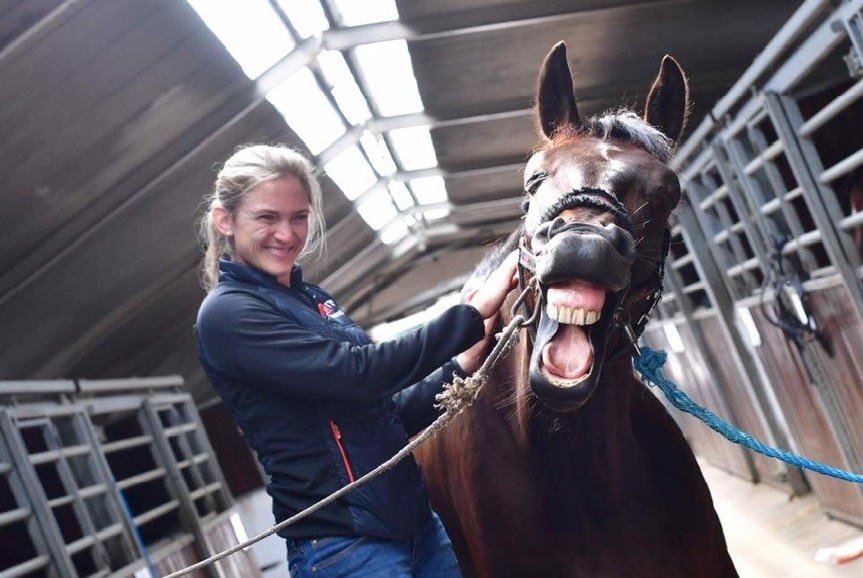Equine Therapy Programs: Transforming Lives One Adventure at a Time
Wiki Article
Assessing the Effectiveness of Laser Treatment in Horse Treatment for Injury Rehab
The examination of laser therapy's performance in equine injury rehabilitation pivots on numerous elements, consisting of recuperation time, pain reduction, and cells regrowth. Vets frequently observe premium end results with laser therapy compared to conventional methods, positioning it as a critical element in equine treatment.Understanding Laser Therapy
Laser therapy has actually become a critical device in veterinary medication, particularly in the treatment of equine problems. Known for its non-invasive nature and efficiency, laser treatment entails the application of particular wavelengths of light to promote tissue repair work and reduce inflammation. This healing modality is significantly favored for its capability to accelerate the recovery process in equines dealing with a selection of musculoskeletal injuries and persistent problems.The main device behind laser treatment is its capability to improve mobile features. When laser light passes through the skin, it is soaked up by mitochondria, the giant of cells, which brings about enhanced production of adenosine triphosphate (ATP) This biochemical power boost promotes cellular fixing and regrowth. In addition, laser treatment advertises vasodilation, enhancing blood circulation and oxygen shipment to damaged tissues, therefore quickening recuperation.
In equine medicine, laser therapy is specifically beneficial for conditions such as tendonitis, osteoarthritis, and injury healing. The technique is admired for its pain-relieving residential properties, enabling steeds to reclaim mobility and function a lot more rapidly. Vets likewise value its minimal negative effects compared to other treatment modalities, making it a trusted and risk-free choice for equine care.

How Laser Treatment Works

Upon absorption, these photons set off a series of biochemical adjustments, boosting mitochondrial function and bring about enhanced adenosine triphosphate (ATP) production. This increase in ATP accelerates mobile metabolic process, promoting tissue repair work and regeneration. Additionally, laser therapy modulates inflammatory reactions by affecting cytokine levels and lowering oxidative anxiety, thereby reducing discomfort and swelling.
One more substantial aspect of laser therapy is its role in improving microcirculation. The treatment promotes vasodilation, improving blood circulation and oxygen shipment to broken tissues (Equine Therapy). This promotes the removal of cellular debris and supports the expansion of fibroblasts and collagen synthesis, important for injury healing
Scientific Proof
The effectiveness of laser therapy in equine treatment has been validated through numerous scientific research studies, showcasing its restorative visit this page potential across a variety of conditions. A research conducted by Turner et al. (2012) demonstrated that horses treated with low-level laser therapy (LLLT) for ligament injuries showed accelerated recovery contrasted to those obtaining conventional therapies.Likewise, research study by Johnson and colleagues (2015) concentrated on equine muscle mass injuries, revealing that laser treatment substantially sped up muscle mass fiber regeneration and minimized muscular tissue tightness. Clinical analyses have shown that laser treatment can reduce chronic problems such as osteo arthritis.
Veterinarian Insights

Veterinarians likewise value the versatility of laser therapy. It can be used for a wide variety of conditions, from shallow injuries to much deeper musculoskeletal injuries. Dr. Emily Brown highlights its utility in dealing with conditions like tendonitis and osteo arthritis, where conventional treatments typically fall short. She mentions that laser therapy can be tailored to the particular requirements of each equine, guaranteeing optimum results.
Furthermore, veterinarians value the capacity to integrate laser treatment with various other treatment modalities. This multimodal technique their explanation can boost overall therapy efficiency, giving a comprehensive remedy for equine recovery. Such endorsements from skilled professionals underscore the growing approval and application of laser treatment in equine medicine.
Practical Factors To Consider
An essential aspect of applying laser therapy in equine therapy entails understanding the practical considerations that ensure its More Bonuses effectiveness and safety and security. Most importantly, it is vital to choose the appropriate laser device, as various types differ in wavelength, power, and penetration depth. Equine Therapy. Vets have to be skilled in these parameters to tailor therapy protocols successfully to every injury kindIn addition, the regularity and duration of laser therapy sessions need mindful planning to maximize restorative benefits while decreasing any kind of prospective adverse effects. Consistent tracking of the steed's feedback to treatment can lead needed adjustments in the treatment routine. Establishing a safe and controlled setting throughout therapies is additionally vital to prevent unintended exposure to laser exhausts, which might damage both the steed and the trainer.
Educating and certification of workers carrying out laser treatment are critical to guarantee correct technique and to promote safety and security requirements. Additionally, keeping exact documents of each session, including laser settings and observed outcomes, is important for assessing the general effectiveness of the treatment and for making data-driven decisions.
Final Thought
Laser therapy has become an efficient modality in equine injury rehab, using considerable benefits in healing time, pain relief, and tissue recovery. Medical research studies underscore considerable enhancements in conditions such as tendonitis and osteoarthritis, credited to improved cellular feature and raised ATP production. Vet monitorings affirm these findings, highlighting superior outcomes compared to traditional treatments. For optimal outcomes, continual tracking and customized treatment procedures remain necessary in leveraging the full capacity of laser treatment in equine care.Report this wiki page